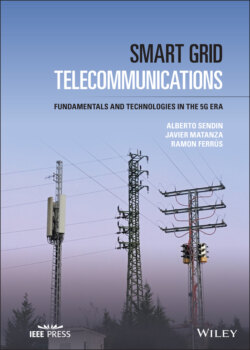Читать книгу Smart Grid Telecommunications - Ramon Ferrús - Страница 20
1.2.2.1.1 Generation 1.2.2.1.1.1 Traditional Power Generation
ОглавлениеPower plants convert the potential energy of existing resources such as renewable energies (water, wind, solar, etc.) and fuel (coal, oil, natural gas, enriched uranium, etc.) into electric energy.
Traditional centralized power plants generate AC power from synchronous generators. These generators provide in fact three‐phase electric power; the voltage source is a combination of three AC voltage sources, i.e., three voltage phasors separated by phase angles of 120°. The frequency of the electricity waveform (i.e. 50 or 60 Hz) is a multiple of the rotation speed of the machine. Voltage is usually no more than 6–40 kV, being determined by the current in the rotating winding (i.e. the rotor) of the generator. The output is taken from the fixed winding (i.e. the stator).
More recent energy sources (e.g., wind turbines and mini hydro units) usually employ asynchronous generators, and the waveform of the generated voltage is not necessarily synchronized with the rotation of the generator. This may create flicker and reactive power quality problems if not properly designed and controlled.
The voltage in the power generation stage is stepped up by a transformer, normally to a much higher voltage. At that HV, the generator connects to the grid in a substation and electricity starts its journey toward the Consumption Points.
